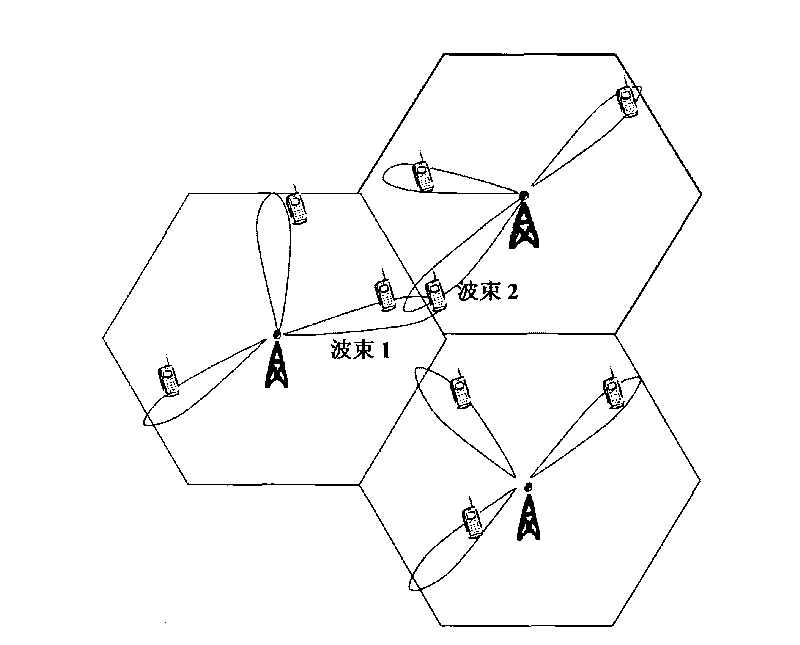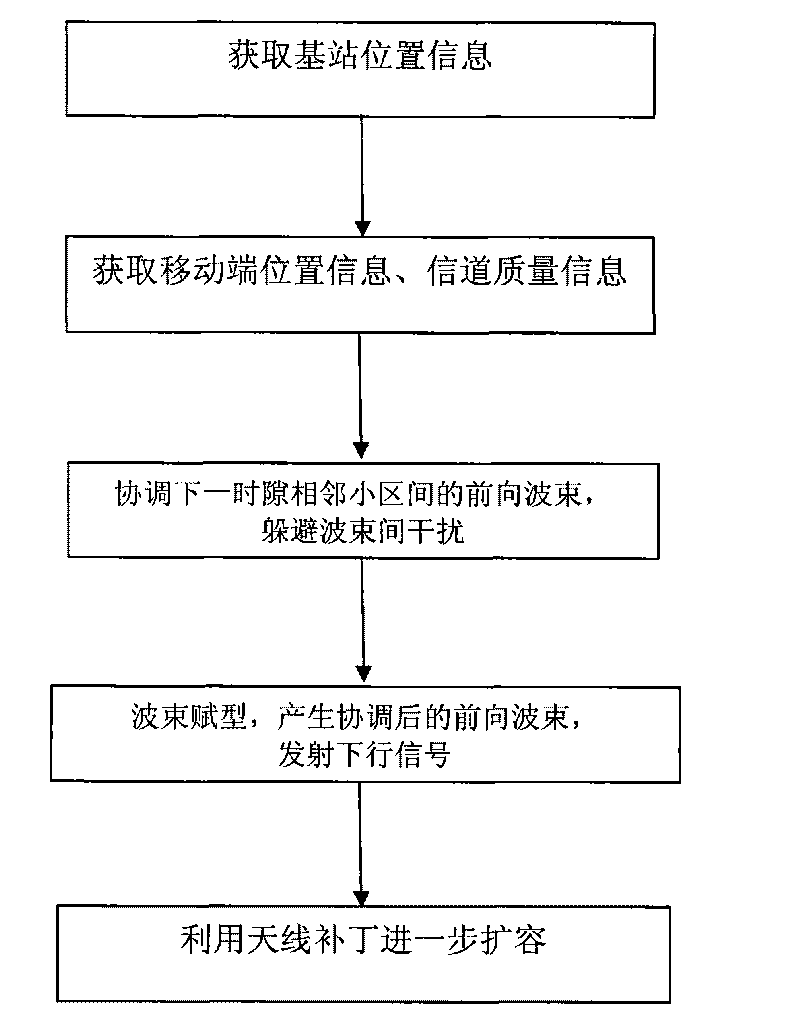Communication system volume expansion method
A communication system and signal technology, applied in wireless communication, electrical components and other directions, can solve the problems of beam collision, co-channel interference, etc., to reduce interference, improve spectrum utilization and system capacity, and improve spectrum utilization and system capacity. Effect
- Summary
- Abstract
- Description
- Claims
- Application Information
AI Technical Summary
Problems solved by technology
Method used
Image
Examples
Embodiment 1
[0043] First, the location information between base stations of adjacent cells is obtained. The positions of adjacent base stations are relatively fixed, and the position information between the base stations has been basically determined when the base stations are set up, or determined through the cable and optical cable transmission signals between the base stations.
[0044] The second step is to obtain the location information and channel quality information of the mobile terminal. The location information and channel quality information of the mobile terminal are obtained through the received uplink signal.
[0045]The third step is planning and coordinating forward beam transmit power between adjacent cells in the next time slot to avoid inter-beam interference. From the first and second steps, the base station of each cell can obtain the location information of its surrounding adjacent base stations, as well as the location and channel quality information of the mobile...
Embodiment 2
[0049] First, the location information between base stations of adjacent cells is obtained. The positions of adjacent base stations are relatively fixed, and the position information between the base stations has been basically determined when the base stations are set up, or determined through the cable and optical cable transmission signals between the base stations.
[0050] The second step is to obtain the location information of the mobile terminal. The location information and channel quality information of the mobile terminal are obtained through the received uplink signal.
[0051] The third step is to plan and control the direction of the forward beam forming of the next time slot in each cell to realize beam avoidance.
[0052] a) Cell sectorization. The cell is sectorized first, and each cell is divided into several sectors with the base station as the center. Such as Figure 5 Shown, the situation when 3 sectors are given.
[0053] b) Coordinate forward beam a...
PUM
 Login to View More
Login to View More Abstract
Description
Claims
Application Information
 Login to View More
Login to View More - R&D
- Intellectual Property
- Life Sciences
- Materials
- Tech Scout
- Unparalleled Data Quality
- Higher Quality Content
- 60% Fewer Hallucinations
Browse by: Latest US Patents, China's latest patents, Technical Efficacy Thesaurus, Application Domain, Technology Topic, Popular Technical Reports.
© 2025 PatSnap. All rights reserved.Legal|Privacy policy|Modern Slavery Act Transparency Statement|Sitemap|About US| Contact US: help@patsnap.com



